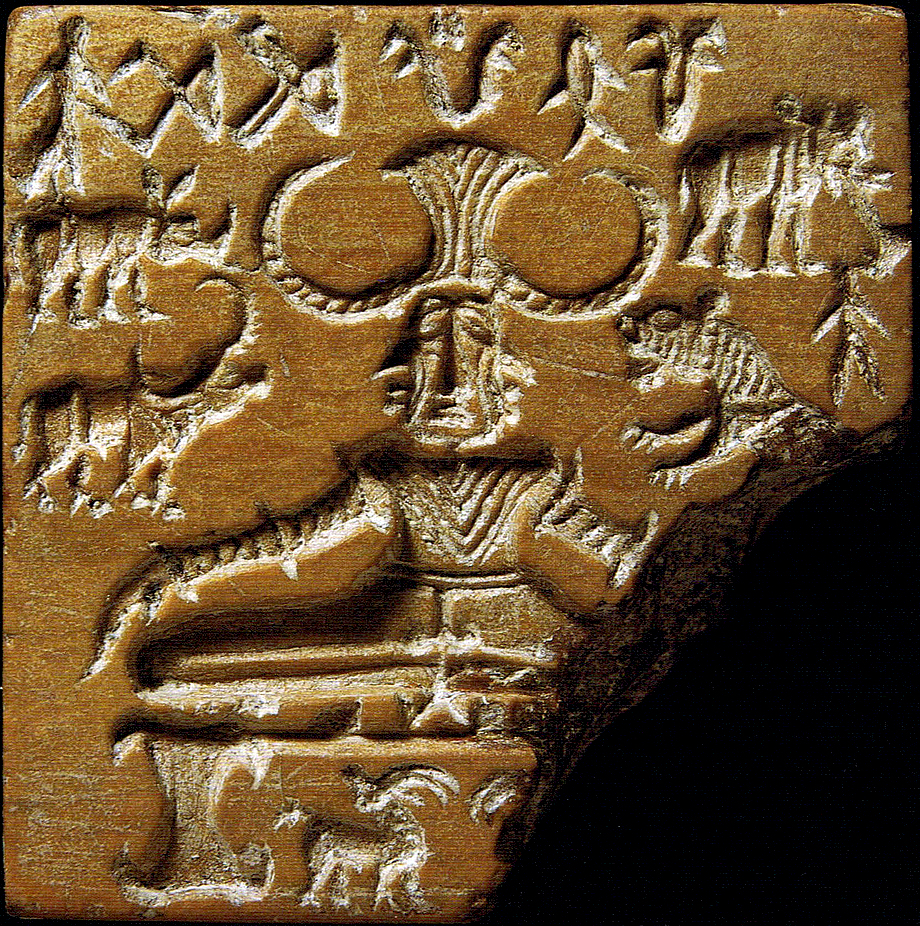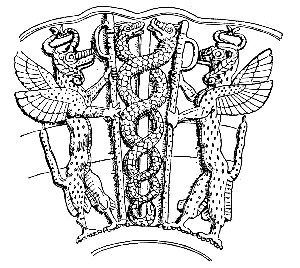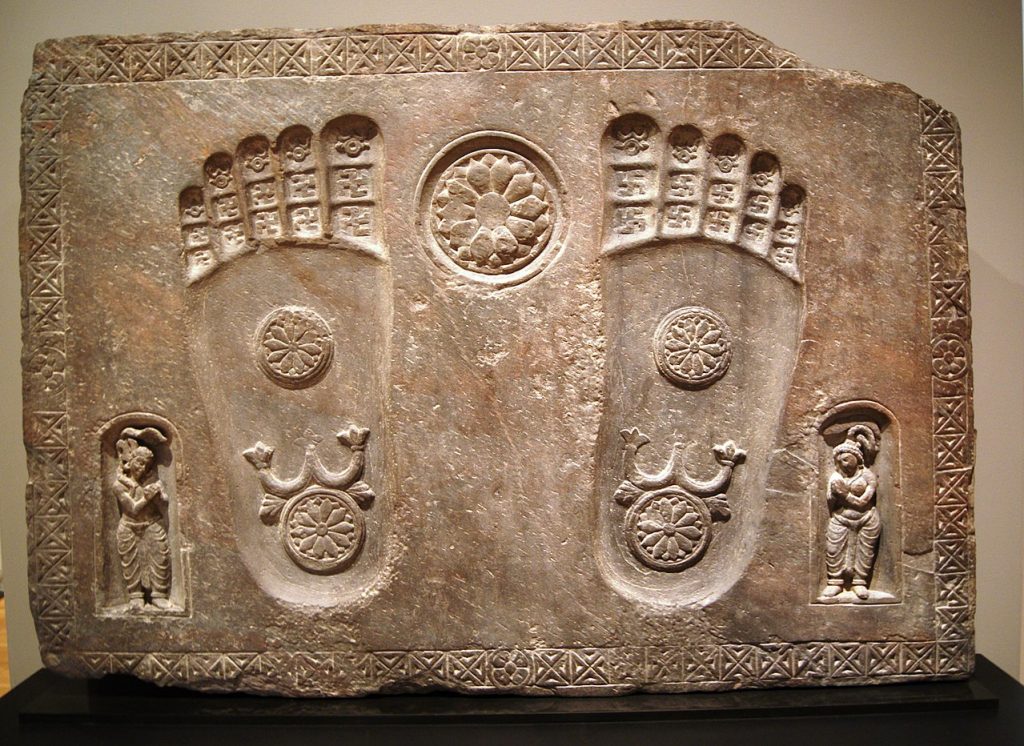Embodied realisation versus abstract essentialism
Existence is suffering
Craving is the origin of suffering
Freedom from craving is the cessation of suffering
The Eightfold Path is the way to the cessation of suffering.
An ancient traditional path
When Gautama decided to join the sramanas, he had a clear objective. Though, as a child and a young man, he had enjoyed the comforts of a palatial life, it is said that, on a visit to the nearby town, he had come face to face with suffering in the shape of an old man, a sick person, and a corpse. Soon after, however, he had met a wandering ascetic seeking release from suffering. Upon these “Four Sights,” Gautama had resolved to embrace the life of the wandering ascetic in order to gain release from suffering, for others as well as himself.

Though not all sramanas chose the path of asceticism for the purpose of overcoming suffering, the existential embodied path of self-transformation was part of a a tradition with roots going back to the Indus Valley Civilisation. A seal has been found, said to represent an early form of Pashupati, Lord of Animals) sitting in the Mulabandhasana, which is a posture used to redirect the flow of prana upward through a subtle channel. Yoga seeks to control prana – the life force – with physical postures, breathing exercises, and mental practices, enabling body and mind to interact and enhance each other. It uses a wide range of disciplines, including periods of fast, aiming to increase vitality and consciousness, extrasensory powers, and spiritual enlightenment.

According to Thomas McEvilley, knowledge of such practices, whose ultimate objective is to refine the physical energy into into spiritual energy, is also attested in Mesopotamia and in Egypt, in iconography representing the life energy as intertwined serpents (cult of Ningizzida) and cobra heads emerging from the Third Eye in Egypt. In addition, the iconography of the Egyptian goddess Nut may indicate a knowledge of the cakras. Daoist alchemic practices in China also rest on a similar purification of jing (generative energy) into qi (vital energy) and shen (spirit energy) as it goes upward through the 3 cakra-like dantians. McEvilley believes that, though cultural influences undoubtedly played a role in the wide ranging dissemination of these practices, what we have here goes back to pre-literate times, and chances are that at least some of the fertility cults the anthropologists have encountered by and large everywhere they set foot, were not just a quest for procreative success, but also a cultivation of the life force to enhance consciousness.
In modern terms, we would call such a set of practices an embodied path of self-transformation. One works on the body in order to cultivate the mind. One purifies the body of its biases in order to clarify and expand consciousness. This was the normal approach to life during the early stages of humankind, where reflective consciousness was still undeveloped and all knowledge was obtained through intuition, the key insight at work in divination.
The embodied existential path versus the abstract essentialist language of the Upanisads
At the time of the Buddha, the traditional embodied approach to reality had been pushed to the margins by the abstract essentialist mindset of the patriarchal Vedic Indo-Aryans who had dominated the Ganges Plains for over 300 years following the Battle of the Ten Kings in 900 BCE. As Nakamura Hajime remarks, Vedic Indo-Aryan thought had “a propensity for the abstract notion, in their way of thinking an abstract idea is expressed as if it were a concrete object, i.e., in their thinking process the universal is easily endowed with substantiality.” For instance, the “way of the gods” and the “way of the fathers” followed by the dead, are described as going through the day, the night, the half-month, six months, as if these were concrete things. “The Sanskrit expresses the individual only as one of the instances belonging to the abstract universal.” It was as if the abstract had become the concrete actual and obliterated it.
No wonder, then, that Gautama had chosen not to engage in a critique of the teachings of the Upanisads at the theoretical level. Once his quest had culminated in his enlightenment, he was of course, compelled to use the heavily essentialist language of the mainstream Brahmanical culture to communicate his teachings. Even then, however, the Buddha often remained silent when asked so-called “cosmological questions,” such as “is the world eternal?” Not only these were unrelated to the goal of release from suffering, but, more significantly, he regarded the (conceptual/abstract) mode of thinking giving rise to such questions as problematic. In other words, they made no sense as they were being asked at an abstract level disconnected from actual concrete reality.
The Buddha’s original decision to undertake an existential embodied quest among the sramanas had most probably been motivated from the start by his rejection of the abstract essentialist views of the brahmanical teachings. He saw these as having lost sight of the actual reality of things as they are. The traditional existential approach apprehended reality as an unfolding of phenomena in the present moment, it was a reality that was experienced from the standpoint of one’s whole being, body and mind. One could even say that it was a reality which one was walking with … It was not a reality which one was observing from the outside, as if it was an operating system keeping the world ticking. Such a view of reality could not be correct, because no one can ever go outside reality to observe it!
The Buddha’s legacy amounts to something we could call a “return to the things themselves,” but in a way that goes far beyond Husserl’s project, which is still a purely cerebral exercise. What the Buddha did is show us the way, explain to us how to “walk” (or rather sit!) in order to “flow” with it. The Dharma helps us clear the way for a spontaneous dropping of the self, as had happened to the Buddha himself, after discontinuing his long fast.
A path of practice, not a doctrine
The Four Noble Truths marked a radical break away from the Brahmanical essentialist agenda. The Upanisads’ core teaching was that the individual self – atman – had to merge with the Cosmic Self – Brahman. But the Buddha says nothing about this, does not reject it, or qualify it. He ignores it because his message is on a different level, that of concrete life. The Four Noble Truths encapsulate the Buddha’s teaching as a practical approach to a cessation of suffering. Suffering is caused by craving and, for suffering to cease, one must cease craving. But you cannot “think” your way out of craving. What is required is a disciplined lifestyle and samadhi (concentration), as laid out in the Eightfold Path. This is an embodied practice to overcome the ego-centred consciousness underlying craving, and realise that one’s true self (in the sense of the function of subjectivity) is no-self. As Masao Abe put it “It is not that “I am empty,” but rather that ‘Emptiness is I’.”
Sources
Thomas McEvilley – The Shape of Ancient Thought (2002)
Nakamura Hajime – Ways of Thinking of Eastern Peoples (1964)
Masao Abe – Zen and Western Thought (1985)

